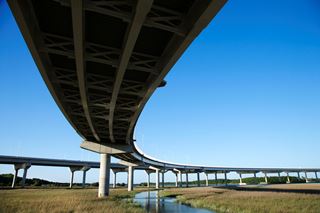 We’ve got an infrastructure funding problem in our state and country. This likely isn’t one of the solutions currently being considered. But then think of all the technological advances we enjoy today that were once just a dream.
We’ve got an infrastructure funding problem in our state and country. This likely isn’t one of the solutions currently being considered. But then think of all the technological advances we enjoy today that were once just a dream.
Entrepreneur.com has the story:
If you drive a car, then you’ve invariably experienced the insanity and frustration that potholes can cause. Roads made of asphalt aren’t perfect. They crack and crumble. The longer they go without repairs the more damage they inflict on our cars (and insurance policies).
One construction company in the Netherlands thinks it has the solution: roads made of recycled plastic from the ocean. Scientists at construction firm VolkerWessels are collaborating with the city of Rotterdam in Holland to build prototypes of these pre-frabricated strips of road called PlasticRoad.
The benefits of pre-fab roads made of recycled plastic, as VolkerWessels sees them:
- Built in a fraction of the construction time (weeks, not months)
- Virtually maintenance free
- Can withstand greater extremes in temperature (-40 degrees F to nearly 180 degree F)
- They have three times the expected lifespan of traditional asphalt
- Have a lightweight design, meaning roadways could more easily be moved or adjusted
PlasticRoad would also have a hollow space that can be used for cables, pipes and rainwater, VolkerWessels says. Check it out
The next step in the prototype phase is to test it in a laboratory to make sure it’s safe in wet and slippery conditions, VolkerWessels says. If all goes well, the company hopes to lay the first fully recycled roadway sometime within three years, Rolf Mars, the director of VolkerWessels’ roads subdivision, KWS Infra, said in a recent interview.
One can only imagine how much more quiet rubber tires on plastic roads would be than on asphalt. And, sayonara potholes. Good riddance.

 The Congressional Budget Office asserts the national Highway Trust Fund would need $3 billion in ADDITIONAL revenue to keep funding transportation projects through the end of September. And it would need $8 billion if Congress chose to extend funding authority until the end of 2015. Read more via
The Congressional Budget Office asserts the national Highway Trust Fund would need $3 billion in ADDITIONAL revenue to keep funding transportation projects through the end of September. And it would need $8 billion if Congress chose to extend funding authority until the end of 2015. Read more via  In general, according to a
In general, according to a 